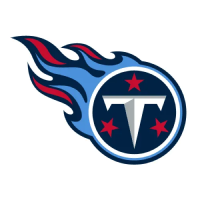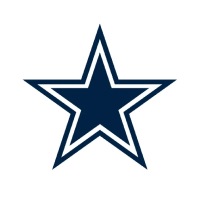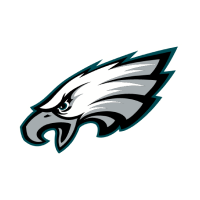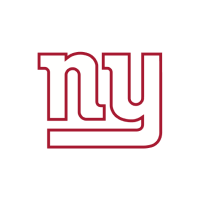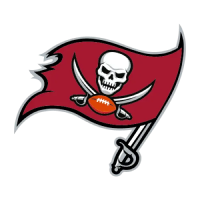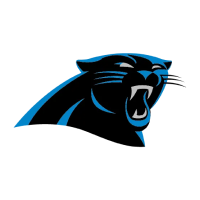It goes without saying that the Philadelphia Eagles have found themselves in metaphoric quicksand as they enter a crucial evaluation process—one that has resulted in Carson Wentz already being shipped off to the Indianapolis Colts. So now, for the often criticized front office duo of team owner Jeffrey Lurie and general manager Howie Roseman, the latter must jockey his way by adding to an aging roster overshadowed by a questionable trade back to No. 12 with the Miami Dolphins just weeks ago, despite the Eagles roster being in dire need of talent.
The move garnered the Eagles an extra fourth-rounder this year and a first in 2022, but it inherently has now made Roseman’s job that much tougher to try and acquire the best scheme fit at No. 12 overall with so many glaring holes on both sides of the ball. Prior to the trade, Philadelphia seemed set to approach the draft selection process with a BPA (best player available) mentality to kick off a rebuild under newly hired head coach Nick Sirianni. With Jalen Hurts now the presumed starter entering Week 1, their prospect of choice within their BPA list would have most likely fallen into their lap with a run on quarterbacks expected within the first handful of selections. Ja’Marr Chase, DeVonta Smith, Kyle Pitts, Jaylen Waddle, all fit the Eagles’ needs at pass-catcher, and a majority of the four all presumably would have been there at No. 6 overall. Not anymore.
With limited cap space, the Eagles expectedly approached the open signing period with a clutched wallet, serving as one of the more frugal organizations thus far in free agency. Instead, they allocated their money in keeping familiar faces in town. Brandon Graham, Jason Kelce, Boston Scott, Greg Ward, Hassan Ridgeway, all re-signed, all are expected to provide substantial roles on either side of the football. With the loss of Jalen Mills to New England, Roseman quickly filled his shoes—and more—by signing former Vikings safety Anthony Harris, who is expected to return to Pro Bowl form on the backend. Additionally, the team signed Joe Flacco to serve the mentor role for Hurts, who could spot start in case of injury.
With needs in abundance, and draft position now worse but solidified for the future, the Eagles have a long way to go. So with that, using our Mock Draft Machine, I looked at which prospects Philadelphia could target in this post-free-agency draft haul. Here is my seven-round mock including scheme fit on each prospect:
Round 1 (No. 12 overall): Jaycee Horn, CB, South Carolina
As predicted, each of the top pass-catching talents in the class were off the board here at No. 12, with DeVonta Smith the last of the pins to fall—taken one spot prior by the New York Giants. However, it’s not the end of the world.
Horn has the ability to become a shutdown corner from the moment he enters the Novacare complex in downtown Philly. And, he just tested out of his mind at South Carolina’s Pro Day.
At 6-foot flat, Horn showed his top-end speed running 4.39s in the 40, he jumped 40.5 inches in the vertical, and showcased his elite explosiveness with an 11-foot-1-inch broad jump. For Horn, it was another day at the office, a product of his work ethic and consistency that has him atop draft boards across the league as CB1.
With Darius Slay on the opposite side, he and Horn would provide a nice tandem of corners within an NFC East loaded at wideout.
Round 2 (No. 37 overall): Rondale Moore, WR, Purdue
You want impact, you get that—and some—with Moore. For a team in absolute dire need of talent out wide, Moore could earn the most touches of any rookie wideout in the class in Shane Steichen’s scheme. He thrives with the ball in his hands and is a true threat to take it the distance every single time he touches the rock. Minor questions arose surrounding his durability at the next level, but he put skeptics to bed with an outstanding Pro Day in which Moore jumped 42.5 inches in the vertical with eye-popping 4.29s 40 speed.
His frame reminds many of Tyreek Hill, and his numbers back it up. Moore is one of my favorite prospects in the class, and Philadelphia would get their top weapon with unique versatility to work both inside and out of the formation.
Round 3 (No. 70 overall): Brevin Jordan, TE, Miami (FL)
The rumors surrounding Zach Ertz are hard to ignore, and his departure is inevitable. Dallas Goedert has proven he can handle TE1 snaps providing production both as a pass-catcher and in-line as a blocker, but the addition of Jordan would offer Hurts a pair of options—similar to the duo of Ertz and Goedert—that is able to execute multiple roles within an offense.
Sirianni used two-TE sets often during his time in Indianapolis, and Jordan, an elite threat with the ball in his hands, could provide a nice safety blanket with athletic pop for the Eagles' underwhelming offense.
Round 3 (No. 84 overall): Tylan Wallace, WR, Oklahoma State
See a trend? I don’t care how many wideouts the Eagles have on their roster, they aren’t good enough to compete. Simple as that. Travis Fulgham flashed last fall, but the combo of Greg Ward, J.J. Arcega-Whiteside, and John Hightower (!) behind Jalen Reagor doesn’t scare anyone—I wouldn’t be surprised if Roseman were to use a multitude of selections on weapons for Hurts.
With the addition of Moore and Jordan, they provide two nice pieces who can contribute right away. Wallace is another rookie talent that should have the opportunity to compete from the get-go. At 6-foot-1, Wallace offers nice length to fill the loss of injury-prone Alshon Jefferey who is able to work all levels of the defense with excellent contact balance and ball skills.
I did want to address the need at linebacker here, but the players available either weren’t worth a third-round selection or did not match what Eagles defensive coordinator Jonathan Gannon is looking to do within the second level.
Round 4 (No. 123 overall): Monty Rice, LB, Georgia
Alex Singleton, 2020 sixth-rounder Shaun Bradley, and 2019 undrafted free agent T.J. Edwards currently makes up the nucleus of the Eagles linebacker unit… woof.
Rice is a downhill ‘backer with above-average cover skills who should slot seamlessly into the Eagles’ 4-3 front with the ability to maneuver within the second level with excellent reactive athleticism and pop at 238 pounds.
Round 5 (No. 150 overall): Walker Little, OT, Stanford
The offensive line issues could be the main contributor to both Wentz’s and Doug Pederson’s departures from Philadelphia. The Eagles were mangled up front by injuries in 2020, with a slew of starters spending time on injured reserve.
2019 first-rounder Andre Dillard is expected to slot in at left tackle unless another injury were to halt his progression—again—but he has all the makings of an anchor as Jason Peters’ replacement. Pro Bowlers Brandon Brooks and Lane Johnson are both expected back to solidify the right side of the line, but if the injury bug were to rear its ugly head once more, it would be wise to have a versatile athlete in Little who can start at both tackle spots while also providing additional versatility in the interior.
Round 6 (No. 189 overall): JaCoby Stevens, S, LSU
Following an outstanding pro day, many believe Stevens’ stock could rise as high as a fourth-round selection due to his versatility. He did it all at LSU, starting at safety, linebacker, and worked as a primary nickel defender on passing downs for the Tigers.
He’s an aggressive box defender who can survive in short zones with good instincts and vision, and he has the quickness necessary to stick with tight ends and running backs in coverage. A former 5-star recruit in high school, a scenario could present itself where Stevens ends up taking Rodney McLeod’s job due to his athleticism and pursuit as a do-it-all talent at the apex of a defense.
Round 6 (No. 224 overall): Malcolm Koonce, EDGE, Buffalo
Like the offensive line, the defensive line has become increasingly old as the seasons have gone on. Fletcher Cox is still a formidable force in the interior, but outside of Graham and Derek Barnett—who the Eagles expect more out of—the well runs dry of pass-rushing talent. Koonce was excellent for the Bulls who could serve well to transition into a 4-3 front that would allow him to pin his ears back and use his NFL-ready frame to rush the passer. A tad underweight at 248 pounds, Koonce could serve to add 10-15 pounds of muscle, but his raw ability off the edge provides excellent value this late in the draft.
Round 6 (No. 225 overall): Marco Wilson, CB, Florida
Let me be clear here: Wilson’s raw ability as a corner rivals any corner in this class. He’s that type of a talent. So you’re probably wondering, “why is he available in the sixth round?”
Wilson is inconsistent in press-man and works best in zone coverage where his eyes are allowed to navigate the turf in front of him, but he’s 100% worth the risk here adding to an Eagles secondary desperate for bodies.
Round 7 (No. 234 overall): Tristen Hoge, IOL, BYU
Hoge is one of the bigger sleepers in this entire class. In a rather weak interior lineman pool, Hoge would present a nice developmental project who could work into a starting role within the next couple of seasons while providing increased depth as a rookie.
Round 7 (No. 240 overall): Dax Milne, WR, BYU
Back to the Cougar well where it’s BPA here this late in the draft. Milne served as Zach Wilson’s top target last season, totaling 1,188 yards and eight touchdowns.
As a wideout, Milne showed average proactive athleticism as a route-runner but does an excellent job at the top of the route, often finding space against opposing corners. He’s also a hyper-competitive player who should receive an opportunity in Philadelphia with unproven wideouts aplenty.
Filed In
Related Articles
NFL Draft
Arik Gilbert Doesn’t Need Big Workload To Be A Top NFL Draft Pick
- Aug 22, 2022
NFL Draft
2023 NFL Mock Draft: Marino 1.0
- Aug 22, 2022
Written By









